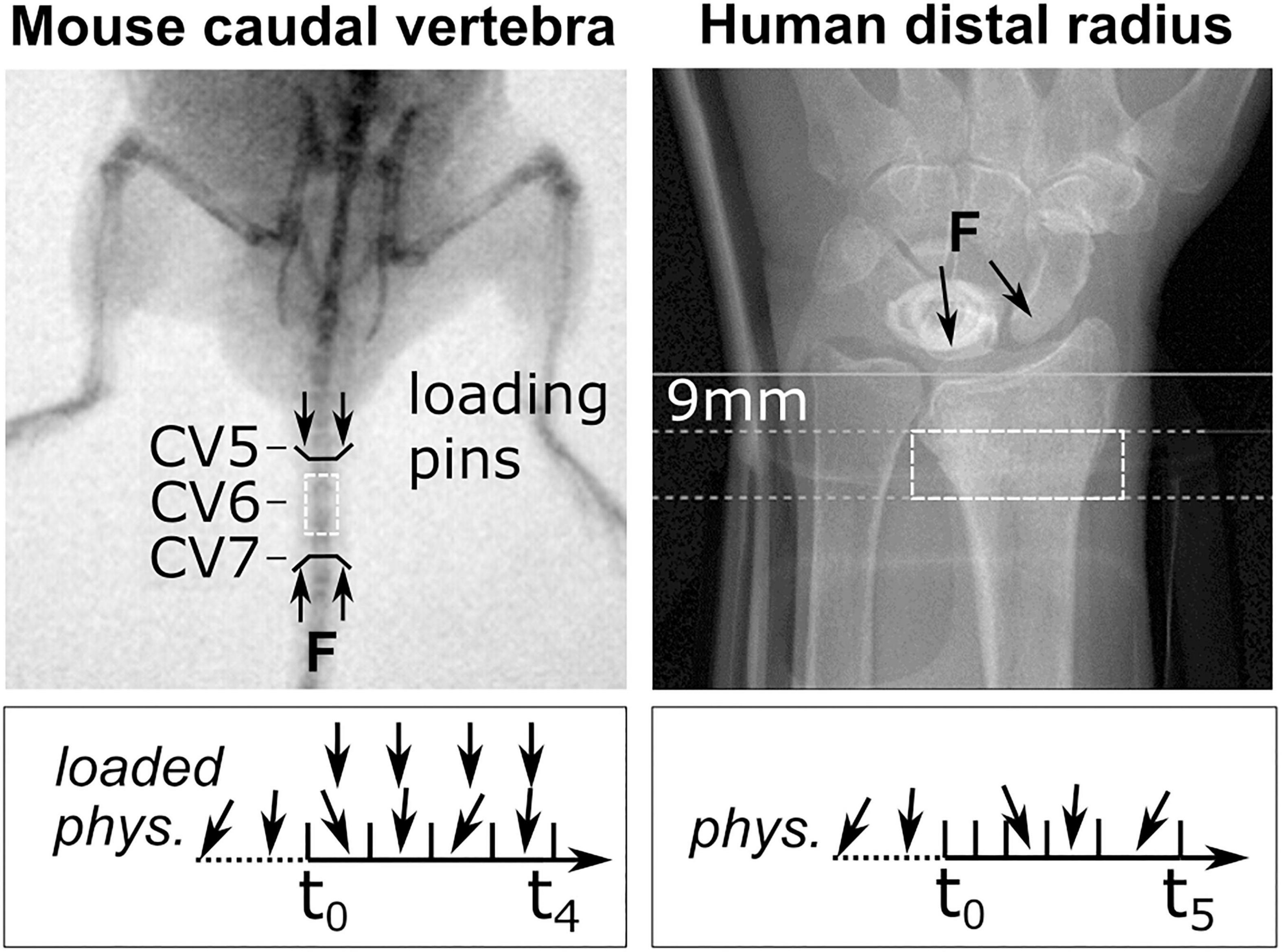Bone Mechanoregulation Allows Subject-Specific Load Estimation Based on Time-Lapsed Micro-CT and HR-pQCT in Vivo
Published in Front. Bioeng. Biotechnol., 2021
Lay Summary
Despite steadily improving treatments for bone diseases, prescribed therapies are not always successful in certain patients. External factors such as diet and exersize can impact patient response to treatment. To better understand the response of bone tissue to day-to-day physical activities researchers at ETH including FIDELIO PhD student Matthias Walle have developed an imaging-based reverse engineering method to estimate mechanical load. At the microscopic level, the response of bone tissue is orchestrated by cells called osteocytes, which can sense and respond to local mechanical forces. Osteocytes direct bone-forming cells to regions where mechanical stimulations are high, and bone resorbing cells to areas where the stimulus is low. Excess bone tissue is removed through this process, and new tissue is added where needed to maintain a metabolic balance. In their study, researchers at ETH back-calculate forces on the skeleton by tracking cellular behaviour over time using high-resolution imaging. Their study validated this method using computer simulations, controlled animal experiments, and finally demonstrated it in patients. Future applications of this method may enable doctors to link subtle changes in bone strength to changes in day-to-day loading. They could use this to identify weak spots in the bone microstructure for local intervention and for the development of personalised treatment approaches.

Recommended citation: Walle M, Marques FC, Ohs N, Blauth M, Müller R and Collins CJ (2021) Bone Mechanoregulation Allows Subject-Specific Load Estimation Based on Time-Lapsed Micro-CT and HR-pQCT in Vivo. Front. Bioeng. Biotechnol. 9:677985. doi: 10.3389/fbioe.2021.677985
Download Paper
.jpg)